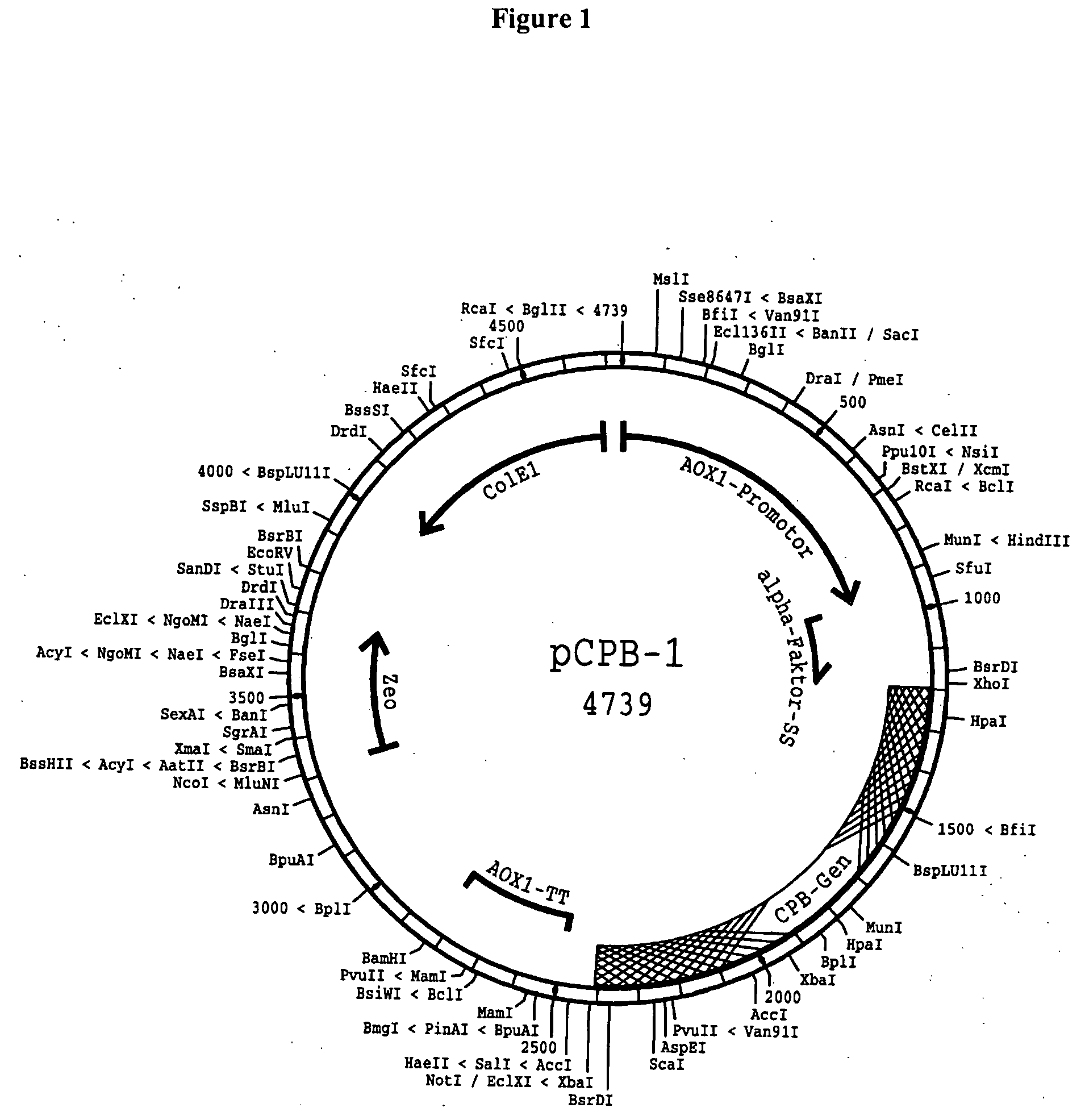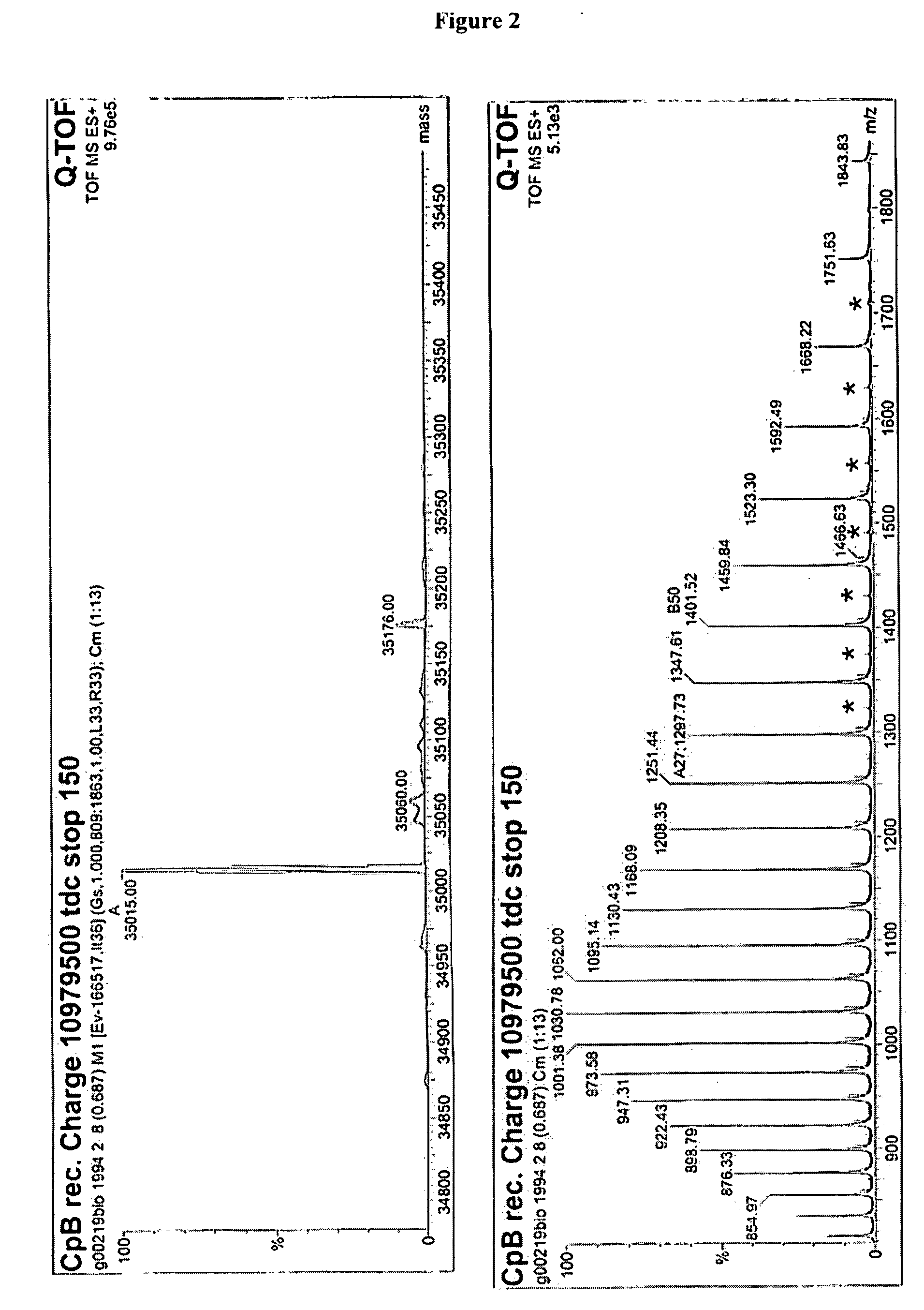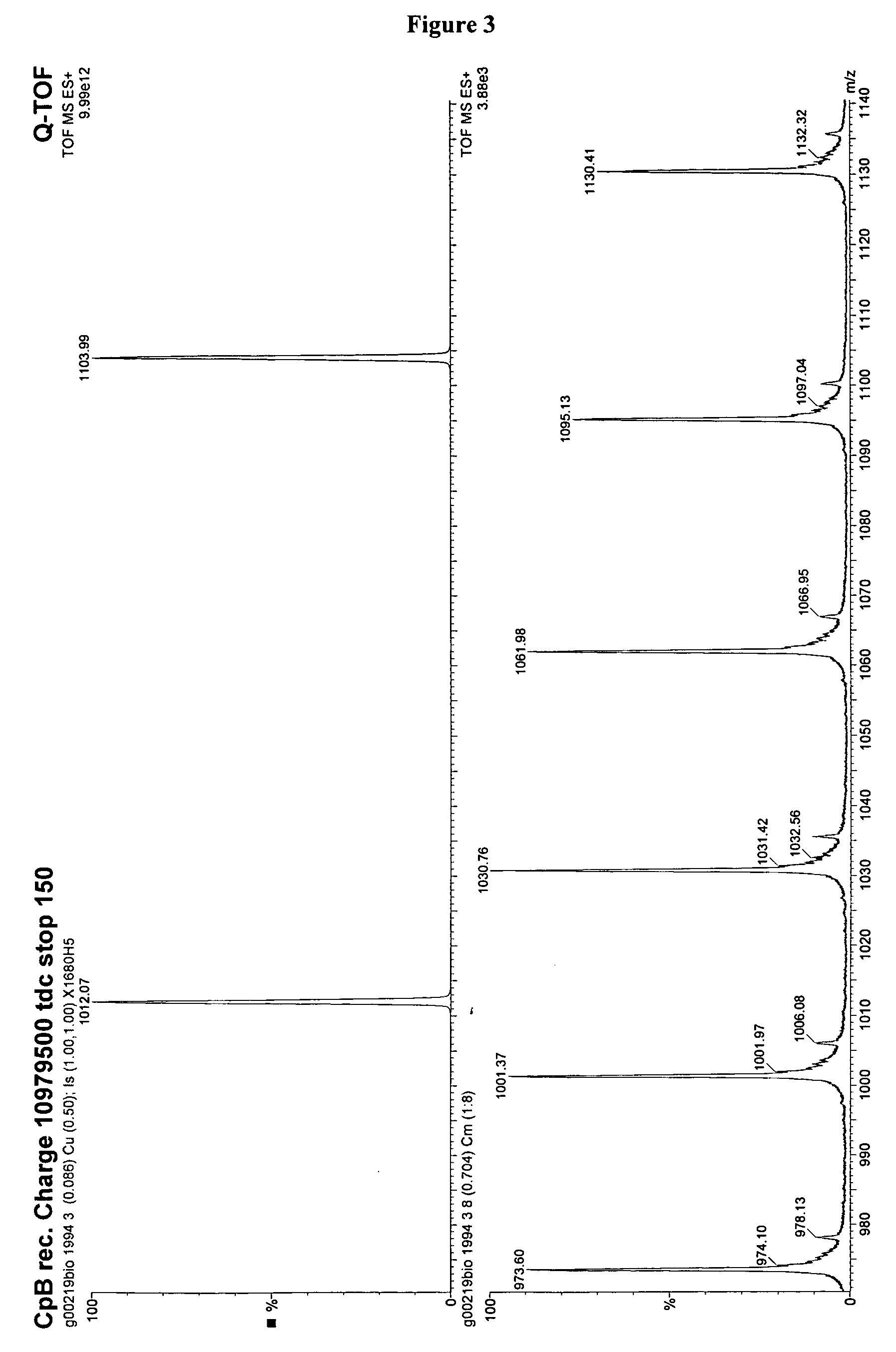Recombinantly expressed carboxypeptidase B and purification thereof
a carboxypeptidase and recombinant technology, applied in the field of biotechnology, can solve the problems of not providing sufficient means, reducing the final yield of purified insulin, and non-denaturing purification methods
- Summary
- Abstract
- Description
- Claims
- Application Information
AI Technical Summary
Benefits of technology
Problems solved by technology
Method used
Image
Examples
example 1
Synthesis of the Gene Encoding the Pre-Protein
[0109] DNA techniques were performed according to standard procedures (Sambrook, Fritsch & Maniatis, Molecular Cloning, A Laboratory Manual, 3rd edition, CSHL Press, 2001). Reagents for molecular biological work were used according to the recommendations of the suppliers.
[0110] A nucleotide sequence encoding an artificial pre-pro-carboxypeptidase B gene according to SEQ ID NO: 3 was synthesized de-novo. Portions of the nucleotide sequence were synthesized as 24 single-stranded DNA oligonucleotides with a length of between 54 and 90 nucleotides. The single-stranded oligonucleotides represented an alternating fashion overlapping portions of the leading strand and the lagging strand of SEQ ID NO: 3. Each oligonucleotides was designed such that the 5′ and 3′ ends overlapped with the neighbouring oligonucleotide. As an exception, the oligonucleotides representing the 5′ and the 3′ terminus of SEQ ID NO: 3 only overlapped with the 3′ and 5′...
example 2
Construction of Vectors, Transformation, Expression
[0115] For further steps regarding the construction of expression vectors, transformation, expression of the pre-protein and secretion of histidine-tagged pro-carboxypeptidase B into growth media, the methods suggested and described in the Invitrogen manuals “Pichia Expression Kit” Version M 011102 25-0043, “pPICZ A, B, and C” Version D 110801 25-0148, “pPICZα A, B, and C” Version E 010302 25-0150, and “pPIC9K” Version E 030402 25-0106 were applied. Reference is also made to further vectors, yeast strains and media mentioned therein. Basic methods of molecular biology were applied as described in Sambrook, Fritsch & Maniatis, Molecular Cloning, A Laboratory Manual, 3rd edition, CSHL Press, 2001.
[0116] As a result, several vectors were obtained whereby each comprised an expression cassette containing capable of expressing the pre-protein according to SEQ ID NO: 4 in methylotrophic yeast strains. A preferred yeast strain was a Pich...
example 3
Protein Quantification
[0118] Quantification of purified rat carboxypeptidase B was performed by way of measuring the extinction at 280 nm using cuvettes having a width of 1 cm. The concentration was determined according to the following formula:
protein (mg / ml)=(10 mg / ml×ΔEprobe×dilution factor) / 21.4
PUM
| Property | Measurement | Unit |
|---|---|---|
| Composition | aaaaa | aaaaa |
| Affinity | aaaaa | aaaaa |
Abstract
Description
Claims
Application Information
 Login to View More
Login to View More - R&D
- Intellectual Property
- Life Sciences
- Materials
- Tech Scout
- Unparalleled Data Quality
- Higher Quality Content
- 60% Fewer Hallucinations
Browse by: Latest US Patents, China's latest patents, Technical Efficacy Thesaurus, Application Domain, Technology Topic, Popular Technical Reports.
© 2025 PatSnap. All rights reserved.Legal|Privacy policy|Modern Slavery Act Transparency Statement|Sitemap|About US| Contact US: help@patsnap.com



